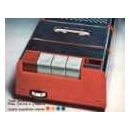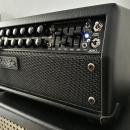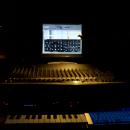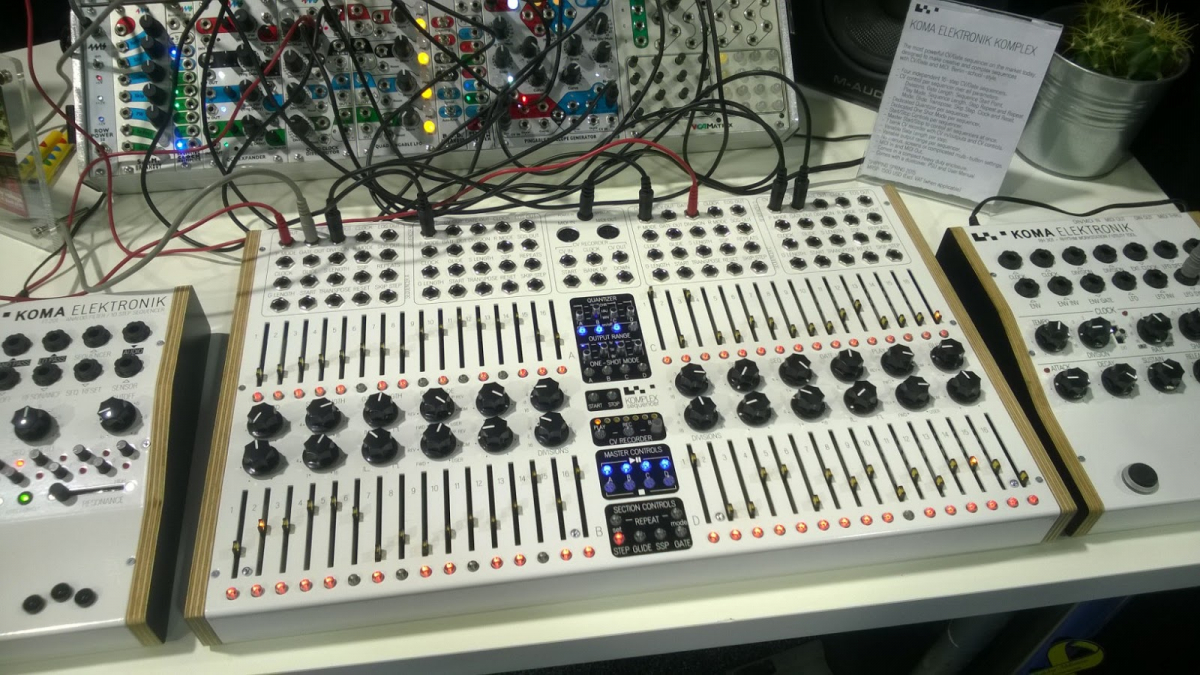Pero el akai este ¿es polifónico o no ? El demostrador no ha tocado un miserable acorde.
NAMM 2015

OFERTAS Ver todas
-
-27%Focusrite Scarlett 2i2 4ª Gen B-Stock
-
-30%Behringer X32 Producer
-
Drawmer 1971 B-Stock





Tentador ese Profeta 6, a ver en que precio acaba finalmente, aunque ya no tengo tanto GAS como para el... Haciendo un off topic, ¿por que les tenéis tanta manía al P-08 y a el P-12?, Solucionado el tema de los potes infinitos en el 08 no les veo muchas pegas a los dos, he probado muchos sintes y aunque algo carrillos, eso si, creo que hay otros inferiores que están mas sobrevalorados por, ¿misticismo quizás?.
Personalmente no me parecen chismes "aburridos" como se dice por aquí, tal vez sea por el tipo de música o sonidos que se quiera crear con ellos, pero para gustos los colores como dice el dicho.
Personalmente no me parecen chismes "aburridos" como se dice por aquí, tal vez sea por el tipo de música o sonidos que se quiera crear con ellos, pero para gustos los colores como dice el dicho.

Rizando el rizo...

KOMA Elektronik GmbH is pleased to announce its latest release: the KOMPLEX SEQUENCER, which enables musicians and producers to construct complex musical patterns via both MIDI and CV/Gate, by the means of sequencing the sequence.
The KOMPLEX SEQUENCER is a musical monster built around four full-featured 16-step sequencers that allow and invite the user to use one or more of the sequencers to sequence the other one. The KOMPLEX SEQUENCER has no screen or submenus; all features have their own dedicated controls, and all features have their own dedicated in- and outputs on the large 86-point patch bay.
Each sequencer has its own start and stop buttons, a quantizer (switchable between chromatic, major & minor scales), one-shot-mode and five different play modes (forward, backward, ping-pong, ping-pong reversed, random). You can of course set the output range per sequencer as well, choose between 2V, 5V or 9V.
Ever since the groundbreaking work of krautrock legends like Tangerine Dream, Klaus Schulze, and Manuel Gottsching, the sequencer has been a key tool for many electronic artists coming from the Berlin scene since the 1970s, ranging from techno producers to experimental ambient artists, all using the repetitive character of the sequencer to create innovative music. We now think it's time for the ultimate sequencer, one that comes with so much power and connectivity that gives the user the possibility to transcend the sequence from a repeating pattern to an ever evolving cadence of sound.
By patching both internal and external CV-sources to the patch bay of the KOMPLEX, the user is able to control the parameters for Sequence Start Point, Sequencer Clock Division, the amount of the Glide between the steps, Skip Step, Repeat Step and Repeat Length. Also, you can Transpose the whole sequence via CV, start it with an external trigger signal and use, for example, an LFO or another sequence to control Sequence Length or Gate Length. This adds up to 20 in- and outputs per individual sequencer, which, when you include the CV recorder outputs, adds up to 86 CV patch points on the whole machine, all conveniently located on the front panel.
Designed as a large 19" 7U surface, the KOMPLEX invites the user to plug and play. The LED's on the 64 step-sliders show the active step, the 64 corresponding RGB LED's under the sliders’ push buttons allow you to set the sequencer start point, choose active steps, set the Glide per step, set the Gate per step, set the amount of Repeats per step and Repeat mode. Besides this, they also choose the output MIDI channel for each sequence. Extra features include a 7 channel CV-recorder whose bank selection is controllable via CV and master start/stop to start/stop all sequencers at once.
The KOMPLEX SEQUENCER is compatible with almost all synthesizers that accept CV/Gate and/or MIDI. No matter if you have a small modular system or a studio filled with vintage synths, the KOMA Elektronik KOMPLEX SEQUENCER will open a whole new world of playability and creativity, allowing you to start creating where all other sequencers stop.
The KOMPLEX SEQUENCER will be available at select retailers worldwide in Spring 2015 for an MSRP of $1500.00. To learn more about the KOMPLEX SEQUENCER or KOMA Elektronik's full line of electronic musical instruments and accessories, please visit http://www.koma-elektronik.com."


KOMA Elektronik GmbH is pleased to announce its latest release: the KOMPLEX SEQUENCER, which enables musicians and producers to construct complex musical patterns via both MIDI and CV/Gate, by the means of sequencing the sequence.
The KOMPLEX SEQUENCER is a musical monster built around four full-featured 16-step sequencers that allow and invite the user to use one or more of the sequencers to sequence the other one. The KOMPLEX SEQUENCER has no screen or submenus; all features have their own dedicated controls, and all features have their own dedicated in- and outputs on the large 86-point patch bay.
Each sequencer has its own start and stop buttons, a quantizer (switchable between chromatic, major & minor scales), one-shot-mode and five different play modes (forward, backward, ping-pong, ping-pong reversed, random). You can of course set the output range per sequencer as well, choose between 2V, 5V or 9V.
Ever since the groundbreaking work of krautrock legends like Tangerine Dream, Klaus Schulze, and Manuel Gottsching, the sequencer has been a key tool for many electronic artists coming from the Berlin scene since the 1970s, ranging from techno producers to experimental ambient artists, all using the repetitive character of the sequencer to create innovative music. We now think it's time for the ultimate sequencer, one that comes with so much power and connectivity that gives the user the possibility to transcend the sequence from a repeating pattern to an ever evolving cadence of sound.
By patching both internal and external CV-sources to the patch bay of the KOMPLEX, the user is able to control the parameters for Sequence Start Point, Sequencer Clock Division, the amount of the Glide between the steps, Skip Step, Repeat Step and Repeat Length. Also, you can Transpose the whole sequence via CV, start it with an external trigger signal and use, for example, an LFO or another sequence to control Sequence Length or Gate Length. This adds up to 20 in- and outputs per individual sequencer, which, when you include the CV recorder outputs, adds up to 86 CV patch points on the whole machine, all conveniently located on the front panel.
Designed as a large 19" 7U surface, the KOMPLEX invites the user to plug and play. The LED's on the 64 step-sliders show the active step, the 64 corresponding RGB LED's under the sliders’ push buttons allow you to set the sequencer start point, choose active steps, set the Glide per step, set the Gate per step, set the amount of Repeats per step and Repeat mode. Besides this, they also choose the output MIDI channel for each sequence. Extra features include a 7 channel CV-recorder whose bank selection is controllable via CV and master start/stop to start/stop all sequencers at once.
The KOMPLEX SEQUENCER is compatible with almost all synthesizers that accept CV/Gate and/or MIDI. No matter if you have a small modular system or a studio filled with vintage synths, the KOMA Elektronik KOMPLEX SEQUENCER will open a whole new world of playability and creativity, allowing you to start creating where all other sequencers stop.
The KOMPLEX SEQUENCER will be available at select retailers worldwide in Spring 2015 for an MSRP of $1500.00. To learn more about the KOMPLEX SEQUENCER or KOMA Elektronik's full line of electronic musical instruments and accessories, please visit http://www.koma-elektronik.com."

 mod
mod
#241 Vamos.. es que muchos de los posibles destinatarios del producto tampoco sabrán tocar un acorde. 
Y hablando del Prophet 6 tengo que decir que aunque ha sido una muy agradable sorpresa el sinte en cuestión
no añade nada especialmente interesante, sino muestra una reedición para los amantes del sonido clásico
y los VCO´S. Está claro que para diseños sonoros más avanzados no es el producto a seguir, pues para eso
tiene el Prophet 12. Precio segúramente se situe en los 2500€ a corto plazo. Un precio interesante y que al menos
hará bajar la demanda de viejunos Prophet 5.
Y voy a opinar de como lo veo acabado: Me parece un pelín inferior a lo esperable, mas teniendo en cuenta el precio
de salida. Lo digo por la apariencia de los pulsadores y por las maderas que veo tienen las primeras unidades.
Diseño clásico, sonidos clásicos. Que nadie espere sonidos novedosos con este sinte aunque los efectos sin duda
serán la herramienta de trabajo para pulir algo el resultado final y que aplaudo a Dave Smith por incorporarlos. Lo tenían que haber hecho antes con el Prophet 8.

Y hablando del Prophet 6 tengo que decir que aunque ha sido una muy agradable sorpresa el sinte en cuestión
no añade nada especialmente interesante, sino muestra una reedición para los amantes del sonido clásico
y los VCO´S. Está claro que para diseños sonoros más avanzados no es el producto a seguir, pues para eso
tiene el Prophet 12. Precio segúramente se situe en los 2500€ a corto plazo. Un precio interesante y que al menos
hará bajar la demanda de viejunos Prophet 5.
Y voy a opinar de como lo veo acabado: Me parece un pelín inferior a lo esperable, mas teniendo en cuenta el precio
de salida. Lo digo por la apariencia de los pulsadores y por las maderas que veo tienen las primeras unidades.
Diseño clásico, sonidos clásicos. Que nadie espere sonidos novedosos con este sinte aunque los efectos sin duda
serán la herramienta de trabajo para pulir algo el resultado final y que aplaudo a Dave Smith por incorporarlos. Lo tenían que haber hecho antes con el Prophet 8.

No sé si esto sale en la NAMM pero al ser novedad lo pongo por aquí.
Kawai CA67 y el CA97
Aparición del GFII , "Grand Feel 2"
Mejoras de la revisión del GF ahora llamado GFII:
Kawai CA67 y el CA97
Aparición del GFII , "Grand Feel 2"
Mejoras de la revisión del GF ahora llamado GFII:
Alguien escribió:
- Ebony Touch black key surfaces
- More authentic key width and edge camber for black keys (based on SK-EX specification)
- Richer colour for black keys
- Moisture absorbency for black keys
- Revised hammer shape and weight (optimised centre of gravity, improves dynamic load)
- Counterweights on all 88 keys, graded from bass to treble
- Improved note-on timing, with ability to trigger notes from the let-off point


Soundprogramer escribió:Y hablando del Prophet 6 tengo que decir que aunque ha sido una muy agradable sorpresa el sinte en cuestión
no añade nada especialmente interesante, sino muestra una reedición para los amantes del sonido clásico
y los VCO´S. Está claro que para diseños sonoros más avanzados no es el producto a seguir, pues para eso
tiene el Prophet 12.
Si, a eso me refiero... Sonidos clásicos y VCO´s. Se están pagando precios salvajes por algunos chismes antiguos siguiendo lo del "vintage" que tan solo tienen un oscilador por voz mas un sub-osc (hablo de polifónicos), y algunos no tienen ni midi... Creo que estos sintes de Dave Smith, dentro de lo que es el campo de la síntesis clásica son opciones muy a tener en cuenta antes de gastarse una fortuna en un aparato que te va a dar mas quebraderos de cabeza que satisfacciones.
Y para otros métodos de síntesis en los que se quiera explorar otros tipos de sonido diferentes, así es, estos no son para ello... Cada sinte hay que verlo en el terreno que les corresponde, jamas me pondría a comparar un TG-77 o un Microwave XT (por poner ejemplos que conozco) con un Prophet-5, son cosas muy diferentes.

Creo yo que para obtener sonidos modernos sirve igual un sintetizador de hoy, VA o analogico, que uno de hace 30 años. Y por suerte tambien se pueden sacar sonidos clasicos con todos ellos... O casi todos.
Clasicon es el que se enroca en que algo nuevo no suene como algo antiguo. A ver, que necesidad tiene de sonar viejo y clasico algo nuevo?
Es un desproposito?
El Prophet 6, MS20M, ARP Odyssey y demas reediciones o como les queramos llamar nos dan la opcion de tener arquitecturas de sintesis conocidas, útiles y con posibilidades creativas.
Lo normal es que no suenen igual que los antiguos porque ni siquiera dos antiguos suenan igual. Cada vino envejece en su cueva, y cada cueva tiene su aroma...
Asi que, si seguis sufriendo clasiconitis este va a ser un buen año para que se os cure con tanta novedad.
Que sí, que el ferrari F40 era mas adrenalinico, pero el 458 es mas rapido y da mejor las curvas... A pesar de llevar inyección.

Clasicon es el que se enroca en que algo nuevo no suene como algo antiguo. A ver, que necesidad tiene de sonar viejo y clasico algo nuevo?
Es un desproposito?
El Prophet 6, MS20M, ARP Odyssey y demas reediciones o como les queramos llamar nos dan la opcion de tener arquitecturas de sintesis conocidas, útiles y con posibilidades creativas.
Lo normal es que no suenen igual que los antiguos porque ni siquiera dos antiguos suenan igual. Cada vino envejece en su cueva, y cada cueva tiene su aroma...
Asi que, si seguis sufriendo clasiconitis este va a ser un buen año para que se os cure con tanta novedad.
Que sí, que el ferrari F40 era mas adrenalinico, pero el 458 es mas rapido y da mejor las curvas... A pesar de llevar inyección.


Si sonaran exactamente igual... puto aburrimiento. Las reediciones ya me deprimen, ya lo he dicho varias veces; antes que reediciones prefiero un modelo mejorado. Las reediciones hardware parecen materializaciones cansinas de los plug ins aunque suenen mejor, pero reitera la filosofía de los plug ins emuladores trasladándolos a la dimensión física. Está claro que muchos quieren eso, pero mientras dure.
El Prophet 6 al menos da ese homenaje a la serie Prophet haciendolo lo mejor posible para mantener un precio realista, recrea su filosofía y caracter, usa osciladores controlados por voltaje etc como se hacian antes, le da cierto aspecto semejante al P5 (no del todo porque sería mucho más grande etc) y le da un lavado de cara con ciertas mejoras. Hace un Prophet 6 con todo ese equilibrio y sello original.
El Prophet 6 al menos da ese homenaje a la serie Prophet haciendolo lo mejor posible para mantener un precio realista, recrea su filosofía y caracter, usa osciladores controlados por voltaje etc como se hacian antes, le da cierto aspecto semejante al P5 (no del todo porque sería mucho más grande etc) y le da un lavado de cara con ciertas mejoras. Hace un Prophet 6 con todo ese equilibrio y sello original.
Hilos similares
Nuevo post
Regístrate o identifícate para poder postear en este hilo





